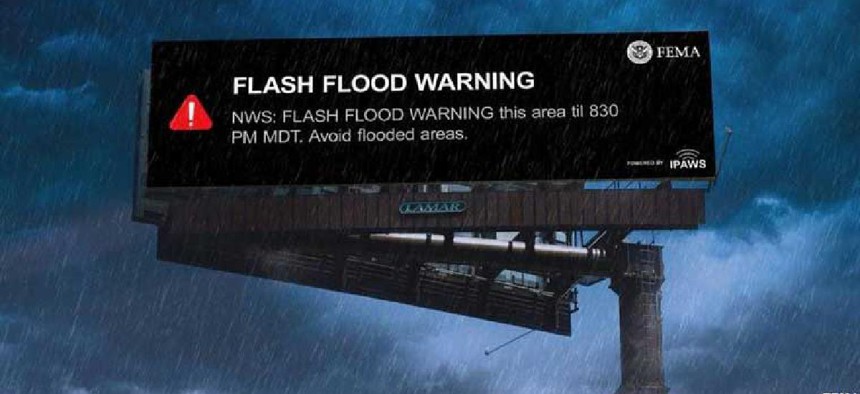Making emergency alerts less of a crisis


Connecting state and local government leaders
Emergency officials are getting more comfortable with sending Integrated Public Alert and Warning System alerts thanks to a new tool to help develop policies and practices and a cloud-based testing lab.
The Federal Emergency Management Agency and the Department of Homeland Security are working to develop a tool to help government entities authorized to use the Integrated Public Alert and Warning System (IPAWS) determine how best to do so.
On Jan. 19, DHS’s Science and Technology Directorate (S&T) announced that it had awarded more than $1.5 million to Corner Alliance, a small-business consulting firm, to develop the Alerts, Warnings and Notifications (AWN) Guidance Tool. The program planning app will be available via a portal on FEMA’s website and “is expected to provide customized resources, best practices and program templates to address the most pressing challenges of alert originators,” according to the agency announcement.
Workers authorized to send alerts via IPAWS will be able to go online and answer questions about their state and local policies for sending alerts to the public, their local IT and cellular infrastructures, how radio and television share the messages, and population size and special needs, including languages spoken. After answering those questions, the tool will deliver “a template for developing a policy, a start in developing their procedures and their protocols, who do they need to check with, who should be the office that’s sending those alerts,” said IPAWS Deputy Director Wade Witmer.
The tool will build on S&T’s work with FEMA on creating the IPAWS Program Planning Toolkit, which offers training guidance, frequently-asked questions and a fact sheet on the IPAWS Lab. The lab is a closed environment that authorities can use to test and practice sending alerts via all IPAWS pathways, including the Emergency Alert System, Wireless Emergency Alerts, Non-Weather Emergency Messages and more.
Authorized users can perform onsite, off-site or independent testing. Originally hosted via an onsite server, the lab migrated the test environment to the cloud in 2019 -- the same year IPAWS began requiring that anyone with authority to send alerts must practice using the system once a month. Currently, more than 1,500 agencies are authorized and have access to send alerts via IPAWS. Three are federal agencies: the National Weather Service (one of the largest users), the U.S. Geological Survey through its ShakeAlert Earthquake Early Warning System and the National Center for Missing and Exploited Children, which sends Amber Alerts. About 75 users are at state-level agencies, with the rest at local ones.
“We replicate a cell network so that you can see what a phone looks like when it gets the alert,” Witmer said. “We have all the equipment that network television and cable use on their end. We have some sirens, we have some signboards, we have all these different things that can and do in some areas integrate into the IPAWS system and display alerts.”
Initially, users had to visit the lab in person, but now that the test environment is cloud-based, it’s available online around the clock. Users can take their alerting tool off the live system, point it to the test cloud and send their messages. Then they go to a webpage to see how the alert would be displayed on cellphones, televisions and radios.
“We do also frequently [provide technical] support especially when an authority might be having a problem,” Witmer added. If messages aren’t working in their area, users can call the lab and workers there disseminate the message. Users can also send a test message to the lab to diagnose problems.
IPAWS avenues are primarily broadcast technologies. Authorities in an area with an emergency specify where they want to alert delivered via television and radio. Cellphone users can opt in to receive alerts, too. One drawback to that, however, is cellular providers broadcast only from cell towers that are relevant to the geographic area, which is sometimes a larger area than the alert targeted.
Government entities have been sending mass alerts since 1934, Witmer said, but the coronavirus pandemic led to an uptick: Usage by local- and state-level authorities was three times greater in 2020 than in 2019.
“Agencies that maybe hadn’t used it before started using it for COVID messaging. That spilled over. There was a lot of usage during the periods of civil unrest that happened there in the middle of the year also,” Witmer said. “I think the realization at the local level of the effectiveness of it -- that you could reach a bunch of people in a given area … they started using it for all sorts of other things that we hadn’t necessarily” thought of, such as missing persons beyond Amber Alerts, police activity, gas leaks and water issues.
The requirement for monthly practices also contributed to the increased use, he added.




